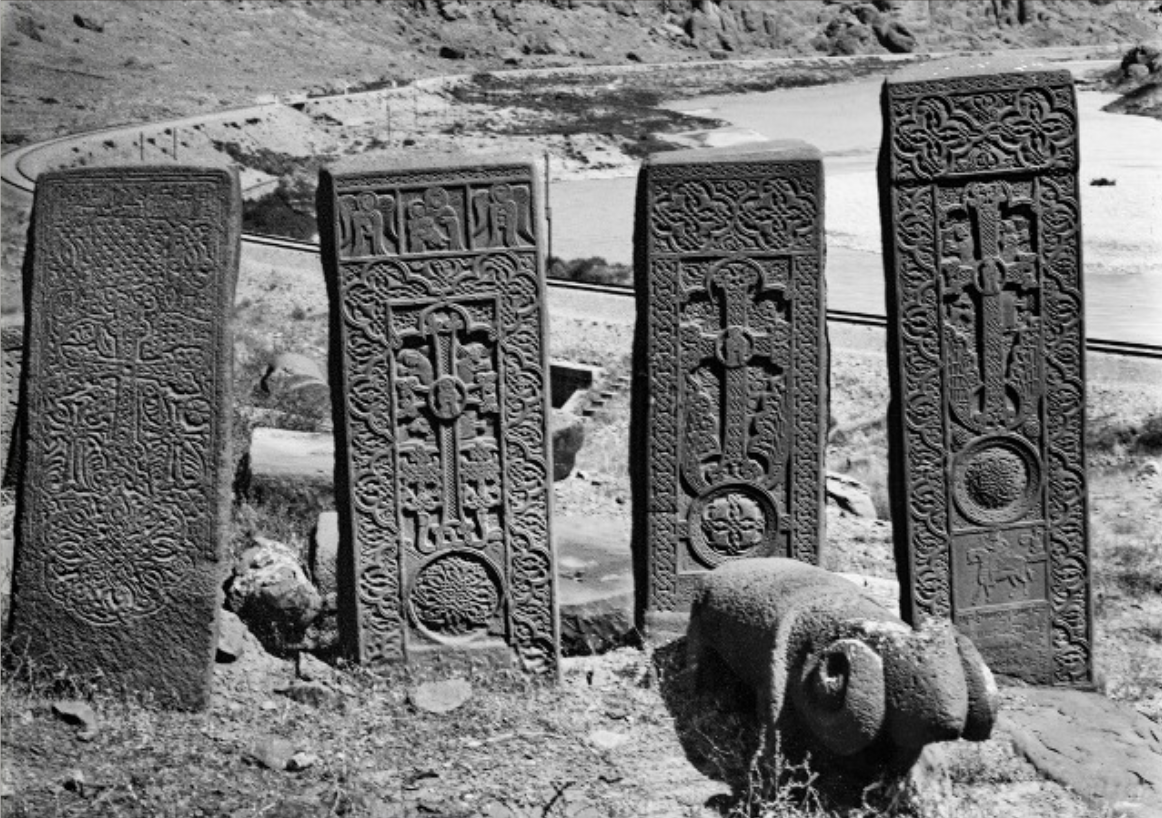©Gardmanahay

LA VULNERABILIDAD DEL PATRIMONIO CULTURAL EN CONFLICTOS ARMADOS
El pasado 25 de 2023, el parlamento de Azerbaiyán aprobó una declaración oficial en la que se reconoce que, en el territorio de la actual Armenia, existió, en el pasado, una comunidad histórica azerbaiyana que tuvo que emigrar a causa de los conflictos.
Esta comunidad histórica eran musulmanes de diferentes etnias y seguidores del islam que convirtieron a los armenios durante las etapas históricas en las que el territorio estuvo administrado por los persas y, posteriormente, por los otomanos.
Haciendo un recorrido geopolítico para entender esta situación, Irán es el único país de mayoría musulmana en la zona, donde aún se convive de manera relativamente pacífica con la diáspora armenia y donde el patrimonio histórico armenio es respetado y puede ser visitado por personas de todas las creencias, resultando, además, un reclamo turístico.
Al llegar a la ciudad de Yulfa (Irán), las iglesias y monasterios son cuidados y visitadores por miles de personas al año, mayoritariamente iraníes. La catedral de San Esteban, datada del siglo IX, ha sido restaurada en varias ocasiones y forma parte, hoy, del patrimonio de la humanidad de la UNESCO.
Pese a todo ello, la ciudad se encuentra, actualmente, dividida en dos debido a la existencia de la frontera irano-azerí. Hasta el siglo XIX, las dos partes formaban una comunidad urbana única, pero tras la derrota de Persia en la guerra con Rusia (1826—1828), la orilla norte pasó a manos rusas y, cuando se desintegró la Unión Soviética, se adhirió a Azerbaiyán. En ese lado, no quedan vestigios armenios. Uno de los peores momentos fue el ocurrido en el cementerio medieval de Yolfa, con la destrucción de más de 3000 cruces de piedra armenias; algunos medios lo calificaron como el peor genocidio cultural del siglo XXI.
Esta situación ha empeorado con el fin del conflicto en septiembre de 2023, destruyendo casi 6.000 cruces de piedra, 22.000 tumbas y 89 iglesias medievales
La destrucción del patrimonio cultural representa una provocación y un crimen contra la historia de la humanidad, poniendo en evidencia la crueldad y la falta de ética de quienes destruyen el patrimonio para aniquilar la identidad de una comunidad.
Por ello, organizaciones como la UNESCO luchan por salvar el patrimonio de estas situaciones y elevarlo a una categoría en la que nos e pueda tocar en caso de conflicto armado, como vimos en el uso del Escudo Azul a partir de la Convención de la Haya en 1954.
__
On 25 2023, the parliament of Azerbaijan adopted an official declaration recognising that in the territory of present-day Armenia, there once existed a historical Azerbaijani community that had to emigrate due to conflicts.
This historical community were Muslims of different ethnicities and followers of Islam who converted Armenians during the historical stages when the territory was administered by the Persians and later by the Ottomans.
To understand this situation geopolitically, Iran is the only Muslim-majority country in the region, where the Armenian diaspora still coexists relatively peacefully and where the Armenian historical heritage is respected and can be visited by people of all faiths, making it a tourist attraction.
Arriving in the city of Yulfa (Iran), the churches and monasteries are cared for and visited by thousands of people every year, mostly Iranians. St Stephen’s Cathedral, dating from the 9th century, has been restored several times and is now a UNESCO World Heritage Site.
Despite all this, the city is now divided in two by the existence of the Iranian-Azeri border. Until the 19th century, the two sides formed a single urban community, but after Persia’s defeat in the war with Russia (1826-1828), the northern side passed into Russian hands and, when the Soviet Union disintegrated, it became part of Azerbaijan. On that side, there are no Armenian remnants left. One of the worst moments was the destruction of more than 3,000 Armenian stone crosses at the medieval cemetery of Yolfa, which some media described as the worst cultural genocide of the 21st century.
This situation has worsened with the end of the conflict in September 2023, destroying almost 6,000 stone crosses, 22,000 tombs and 89 medieval churches.
The destruction of cultural heritage represents a provocation and a crime against the history of humanity, highlighting the cruelty and lack of ethics of those who destroy heritage in order to annihilate the identity of a community.
For this reason, organisations such as UNESCO are fighting to save heritage from these situations and to elevate it to a category where it cannot be touched in the event of armed conflict, as we saw in the use of the Blue Shield after the Hague Convention in 1954.
__
